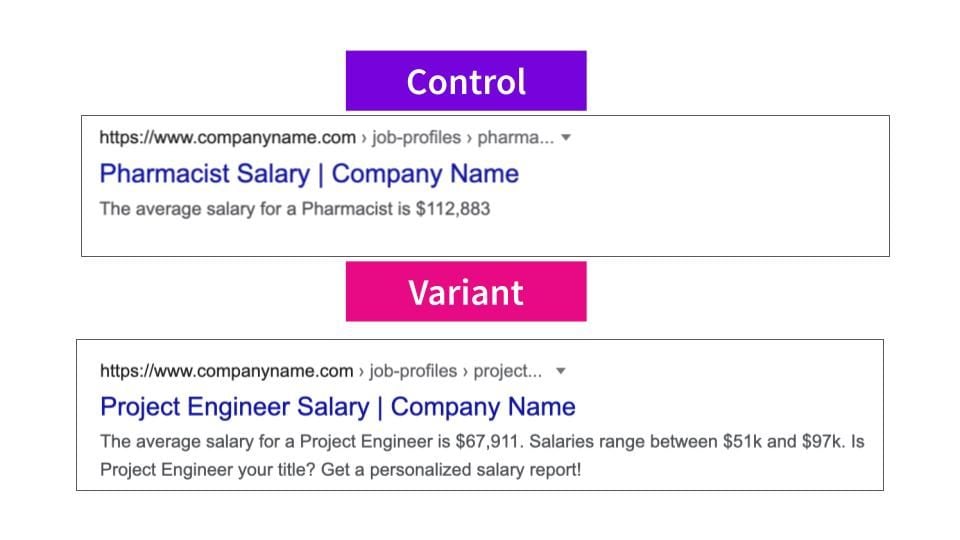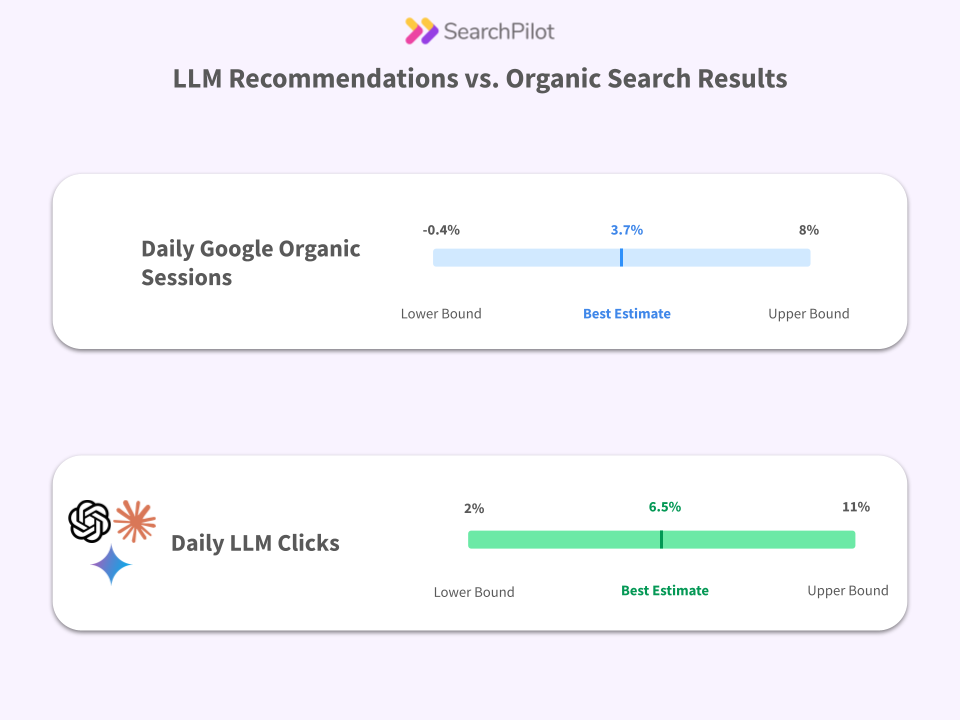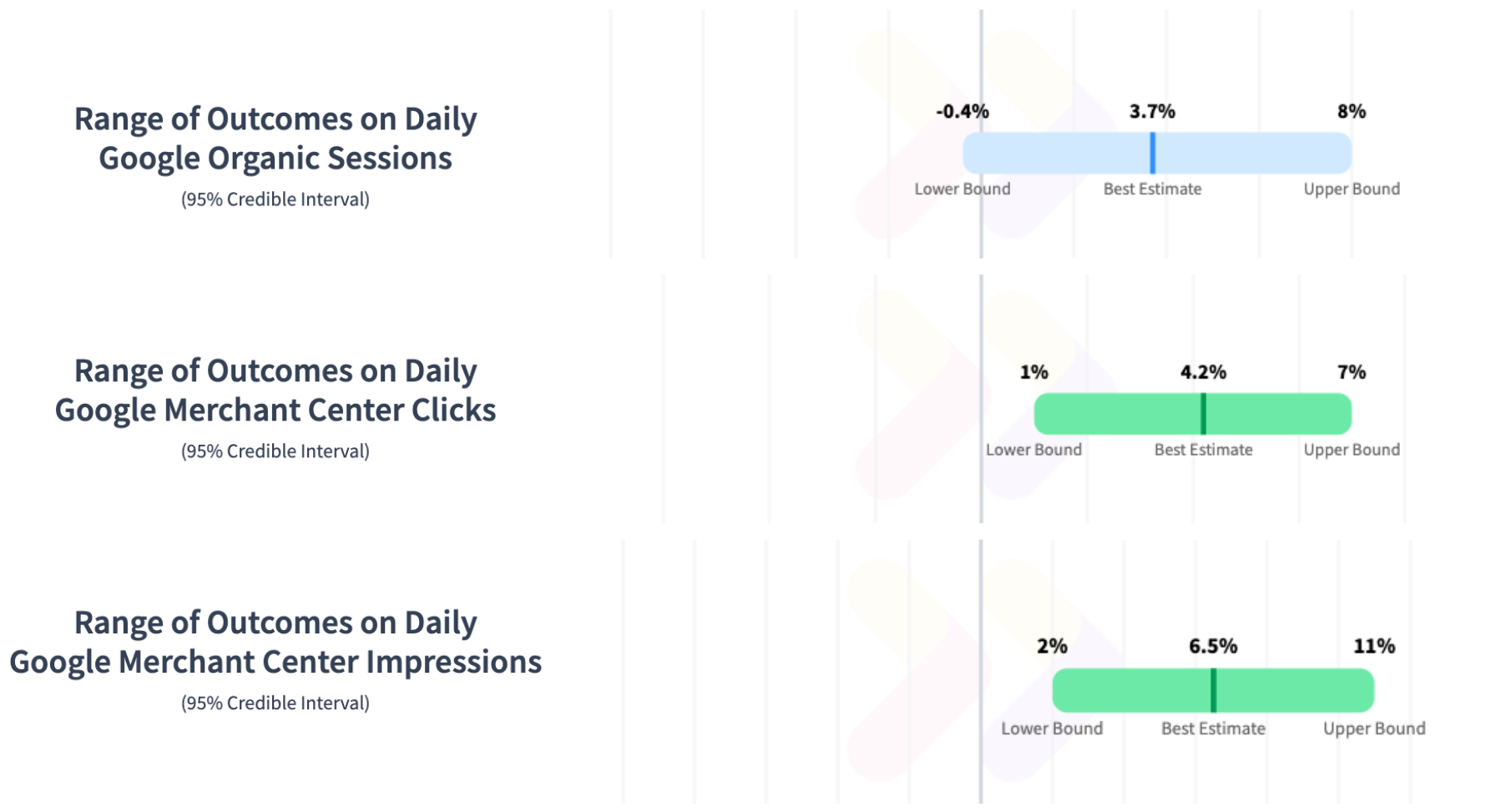As a two-sided marketplace, job websites have unique SEO challenges that most SEO professionals may never encounter.
For instance, they have to balance the competing needs of both hiring companies and job candidates, and the pages that get the most backlinks are the most transient (i.e., the job listing pages).
Because of this, job boards are particularly well-suited for SEO A/B testing. It can take some of the guesswork out of the hard decisions that SEO pros have to make.
In this post, we’re exploring some of the key approaches specific to SEO testing for job boards, including sharing a few examples.
Basic principles of SEO testing
Industry job boards often get lots of traffic. However, as with any two-sided marketplace, the hiring companies and job seekers have very different goals and expectations for what they want to see. This can make it hard to know what changes to prioritize.
Controlled SEO split-testing can make this process a little easier since you can split similar pages into control and variant groups to run experiments.
In order to run statistically significant SEO tests on a job board, you need the following:
- Many pages with the same template (like job listing or job category pages!)
- Enough traffic (i.e., at least 1,000 organic visits / day to the site section where you want to test)
Then, it is about creating your hypothesis, designing your test, and measuring and analyzing your results.
Common job board variants to test
As a two-sided “content marketplace,” there are nearly endless possibilities of SEO tests you can run on job boards, including but not limited to:
- Customizing title and meta descriptions for category and job listing pages (i.e., adding recency signals, location, salary ranges, etc.)
- Copy updates to category and job listing pages
- Testing which pages you allow to be indexed
- Structured data markup changes for job listing pages
- Internal linking strategy changes
- Testing new page templates and layouts
- Site speed and Core Web Vitals improvements
3 job board examples you might want to test
Here are three specific examples of experiments we have seen run on job boards.
1. Adding min-max salary ranges to meta descriptions
Does adding salary ranges to the job listing meta description improve results? One of our customers ran this test on their informational job pages.
For this experiment, they changed the meta description to “The average salary for a [JOB TITLE] is $Xk. Salaries range between $Yk and $Zk. Is [JOB TITLE] your title? Get a personalized salary report!”
They also added “Salaries range between $Yk and $Zk.” as a second sentence to the snippet above the fold; the idea being that updating the line that Google was already using would make it more likely for it to appear in the SERP.

The end result: a ~7% decline in organic traffic with these changes.
This test shows just how price-sensitive users can be on the SERP. Our analysis showed that the bottom end of the advertised range was often below the numbers competitors were offering. This serves as a reminder that meta description changes can still negatively impact organic traffic.
2. Adding month and year to title tags
For listing sites, like job boards, one of the most important factors is content recency. Jobseekers don’t want to waste time reading and applying to jobs that are months old and already filled. They want to see the newest listings first. That’s why we ran an experiment to add month and year to title tags on job listing pages.
With this in mind, in January 2020, a customer ran a test on listings pages to add “in January 2020” to title tags. The website is in an industry where January is a crucial peak time, and there is high turnover of their listings, so freshness is a key signal to their potential users.
This test had a strong positive impact on organic sessions:

Our hypothesis was correct. The test led to the new variant outperforming the control by 5%.
Subsequent tests in other months showed that regardless of the time of year, including a freshness signal in the form of the current month and year in the title tag was beneficial for organic traffic.
3. Testing bold site architecture changes
One of the biggest conundrums with job boards is that the pages that get the most backlinks (i.e., the individual job listing pages) are also the most transient. Most of these pages disappear within a month or two.
On top of that, you need to think about a jobseeker’s search experience. Should they land on the company listing page with all open jobs or an individual job listing?
So, it is no wonder that job site SEOs have to make tough decisions like whether to index job listing pages at all.
That’s where using a solution, like SearchPilot, can come in handy. SearchPilot meta CMS capabilities remove that uncertainty by enabling tests including:
- Adding / removing noindex and other robot control protocols
- Different status codes for different pages (including removing or redirecting pages)
In sum, from small tests like adding month and year to title tags to large site architecture changes, split-testing can have a big impact on high-traffic job boards. We have seen surprising negative results and very impactful positive tests. When operating in an area of high uncertainty, you need data to be able to operate effectively.
If you’re interested in hearing more about what SearchPilot can do for your job site, get in touch here.
Image credit: Clem Onojeghuo.



